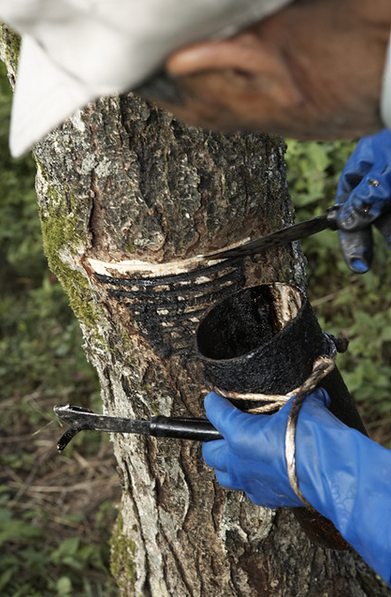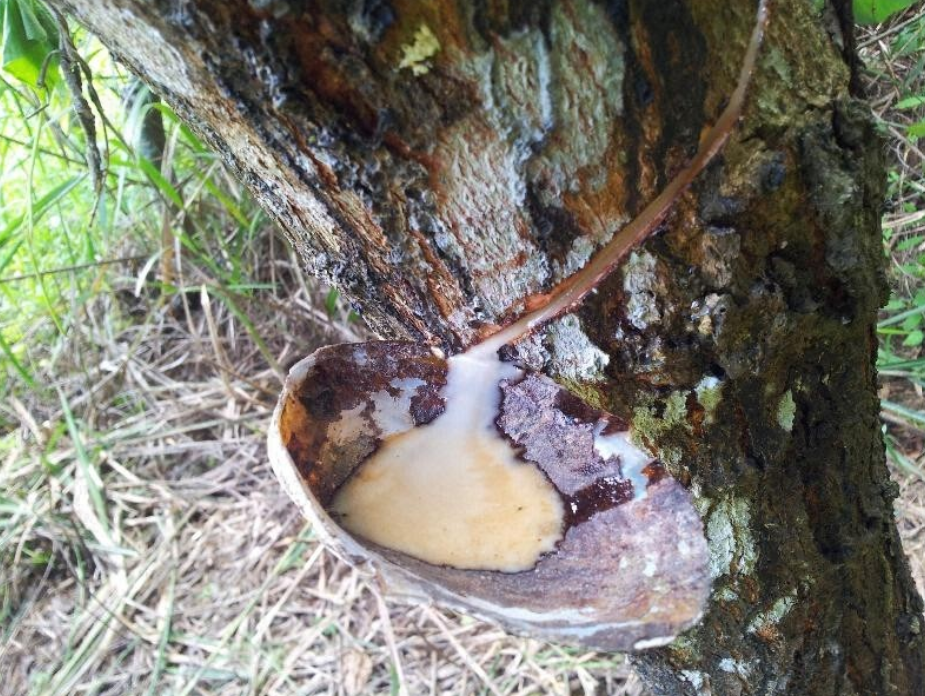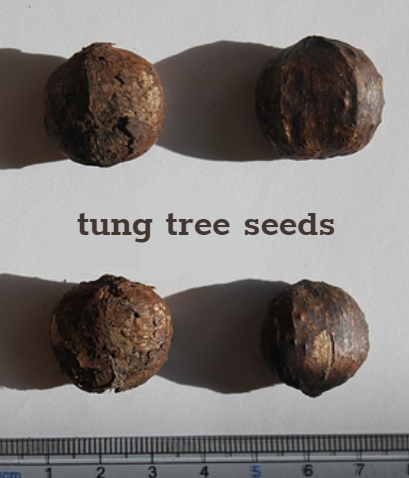"Urushi" technique
In the intricate artistry of crafting my shaving brushes, the Urushi technique takes center stage, drawing inspiration from the sap of the Toxicodendron vernicifluum, commonly known as the Chinese lacquer tree. This venerable Asian tree, cultivated in China, Japan, and Korea, yields a toxic yet remarkably durable sap that has been harnessed for centuries in the creation of exquisite Chinese, Japanese, and Korean lacquerware.
The mature Chinese lacquer tree, reaching heights of up to 20 meters, bears large leaves, each adorned with 7 to 19 leaflets, containing the compound urushi oil. This compound, aptly named after the Japanese term for the tree, "urushi" (漆), serves as the lifeblood for an ancient tradition of lacquer craftsmanship.
The meticulous process begins by tapping the sap, rich with urushiol, from the trunk of a 10-year-old tree. Horizontal incisions on the trunk release the greyish-yellow sap, which is then filtered, heat-treated, or colored before being delicately applied to the base material intended for lacquering. The curing process is a dance of patience, requiring the applied sap to undergo polymerization in a warm, humid chamber or closet for 12 to 24 hours. This transformative journey results in a clear, hard, and waterproof surface, renowned for its extreme durability and glossy finish.
The applications of lacquer are as diverse as they are enduring. From tableware to musical instruments, fountain pens to jewelry, the art of lacquering stands as a testament to the resilience and beauty derived from the Chinese lacquer tree. The pigments used in urushiol finishes range from cinnabar-red to the common black and red, incorporating powdered iron oxide pigments like ferrous-ferric oxide (magnetite) and ferric oxide (rust).
In a historical context, the sap of the Chinese lacquer tree played a role in the ceremonies of Buddhist monks practicing Sokushinbutsu, adding a spiritual dimension to the legacy of this ancient and revered technique. Urushi, drawn from the essence of the Toxicodendron vernicifluum, infuses my shaving brushes with not just a finish, but a narrative of centuries-old craftsmanship and cultural richness.
Enter the realm of artistry with my Urushi technique, an ancient Japanese craft I am trying to master. The process, spanning 3-8 weeks, begins with the meticulous preparation of each handle. Urushi, derived from the sap of the lacquer tree, demands a delicate balance of temperature and humidity for optimal curing. This intricate dance unfolds within a specialized chamber known as the 'Furo,' ensuring perfection in the final product.
Urushi is not merely a finish; it's a tradition, a legacy meticulously woven into each brush. The sap is layered onto the handle, creating a resilient, lustrous coating that not only enhances the aesthetic but also fortifies the wood. The result is a shaving brush that transcends utility, becoming an artifact of beauty and endurance.
In my pursuit of excellence, I've embraced Urushi not just as a technique but as a commitment to heritage and quality. The confluence of time-honored methods and contemporary craftsmanship defines Skaban Shaving Brushes, where every creation is a testament to the dedication and passion I invest in each brush, ensuring an unrivaled grooming experience for the discerning individual.
"Natural Finishing" technique
In essence, my "Natural Finishing" method involves this sophisticated application of tung oil, resulting in a meticulously crafted, durable finish that not only enhances the inherent beauty of the wood but also showcases a unique, almost ethereal quality.
"Finishing Oil" technique
For those seeking the epitome of refinement, my Finishing Oil technique is a testament to craftsmanship. I employ a blend of mixed oils and lacquers, applying 6-8 coats to each handle over two weeks. The result is a luxuriously smooth finish that elevates the tactile experience of my brushes.
